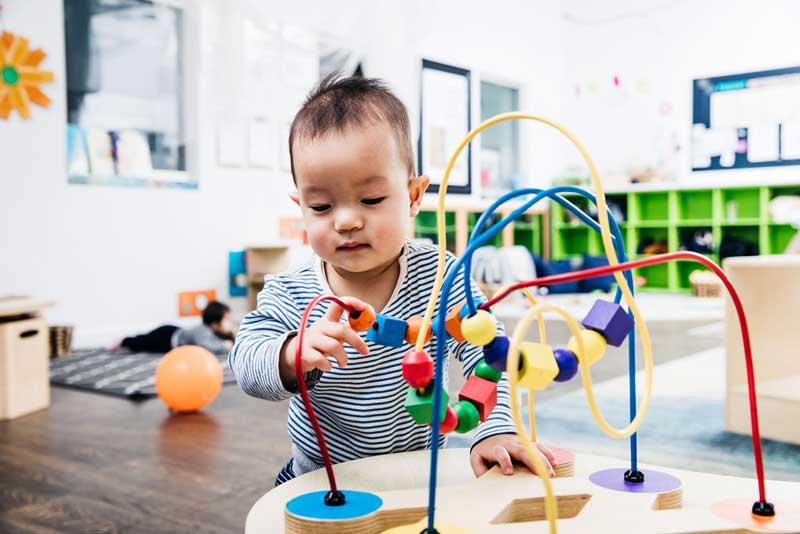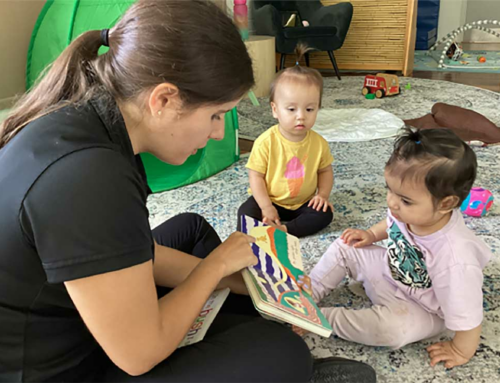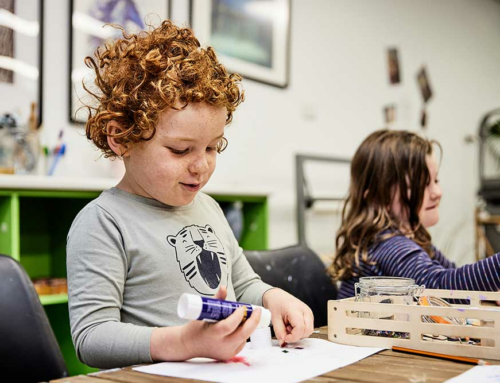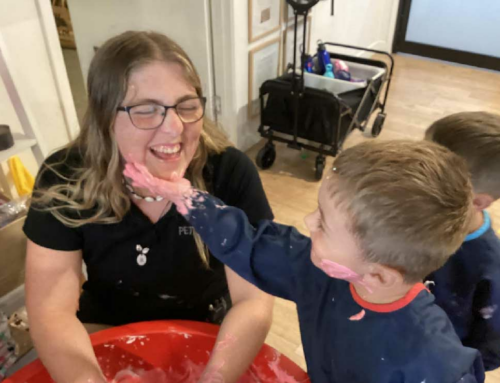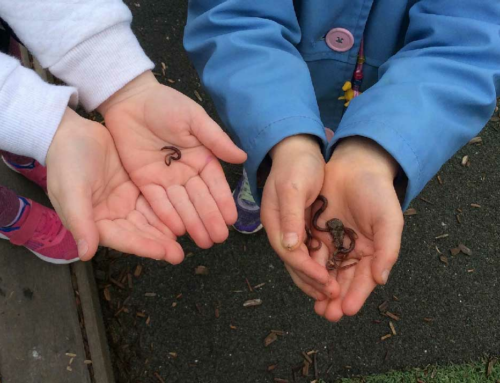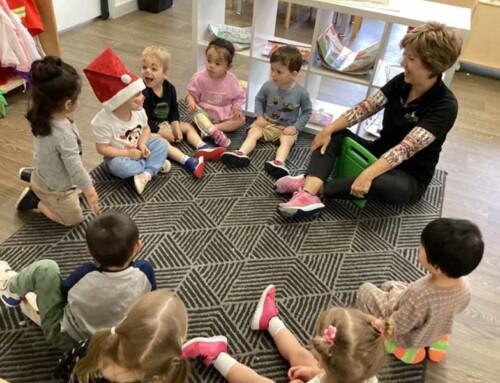Does your child have too many toys? Do you find yourself tripping over playthings, standing on sharp trinkets or with no room left as plushies are bursting out the door? Then, your child’s toys may be stifling their creativity.
Some viewpoints propose children should have no or fewer toys. While you might object to this idea, most research supports less is best. So how do we define what is a toy? We define a toy as a manufactured object such as a plastic action figure.
Early childhood researchers and Educators frequently conduct observations and reflections on children’s behaviour at playtime with and without the assistance of toys. With fewer toys, there are noticeable changes in behaviour.
Some of the outcomes of this research emphasise children’s play with having fewer toys and more natural resources. Are you’re concerned with your child’s creativity or their overabundance of toys? Read on to learn:
- Why too many toys can cause problems.
- Decluttering strategies.
- How to encourage creative play.
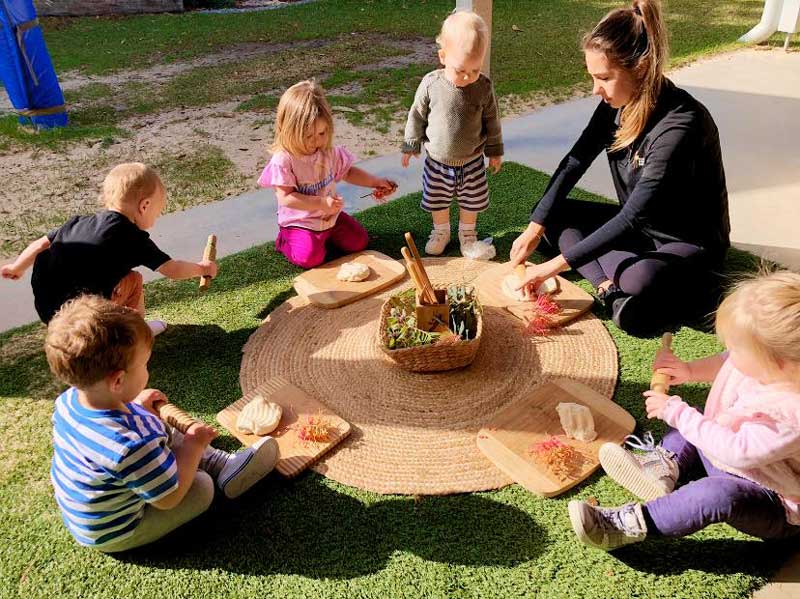
Can too many toys cause problems?
Families, Educators and researchers have noticed that too many toys can cause problems. And it’s not just our feet that suffer from scattered bits and pieces. Too many toys can:
- Cause children to be overwhelmed.
- Create messy household clutter.
- Negatively affect the environment and reduce sustainability.
- Be detrimental to children’s health and development.
While we may love to surround our children with tiny, tinkered pleasures, a 2018 study by researchers from the University of Toledo in the USA found that too many toys can cause problems with toddlers‘ creativity. It discovered fewer toys increased:
- The length of playtime with one toy.
- Increased the variety of ways a child played with a toy.
- Promoted the support of children’s health and development in natural environments.
However, the Toledo researchers weren’t the first to question the usefulness of toys. German researchers have long asked whether toys are beneficial. They associated the number of toys with addictive behaviour leading to “The Toy Free Kindergarten” project.
The project, which began in the 1980s, recognises the need for children to have quality playtime. However, it presented the argument that children’s play revolves around more and more finished products, and:
- Negatively influenced a child’s imaginative capacities.
- Reduced the promotion of life skills.
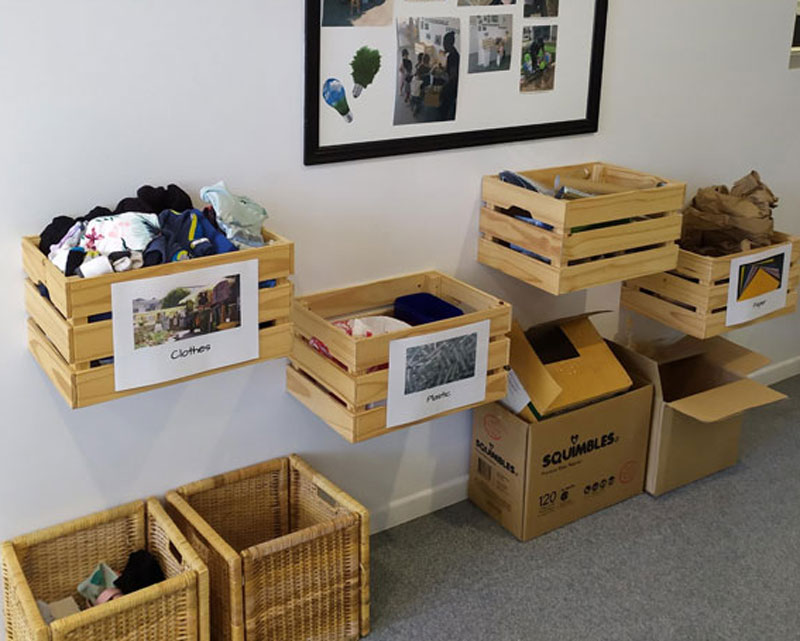
8 Decluttering strategies for when you have too many toys
- Observe your child’s play and see which toys they play with the most. Pack up the toys they ignore or have grown out of and donate those in excellent condition to a worthy cause like Save the Children Australia.
- Encourage your child to sort through and give away quality toys to local disadvantaged families or a local toy library. This decluttering strategy strengthens community connections and promotes empathy and kindness.
- Stop buying too many toys. Instead, increase your resilience to those big, beautiful eyes as you wander past the toy aisles while shopping. Your home and your wallet will thank you later.
- Put half the toys your child has in storage for a few months. Then, rotate the toys in circulation so they don’t have too many choices at playtime. Fewer toys will encourage your child’s creativity.
- Engage your child in tidying their play area. Ask them which toys they enjoy playing with most. Perhaps it’s time to give the least-liked away.
- Hold a garage or yard sale with your child. Declutter your home of excess toys by making it a fun and rewarding experience. Take a tip from “Toy Story”, and have your children fill a bucket with toys to sell.
- Purchase less manufactured products and introduce more natural resources. Natural and repurposed resources promote inquiry and creative play.
- Donate unwanted items to your child care, like the sustainability station at Petit Early Learning Journey Hamilton.
Before throwing them out, check for local recycling programs that want unwanted toys. For example, some recycled programs take preloved stuffed toys, plastic and even gadgets with electronic parts.
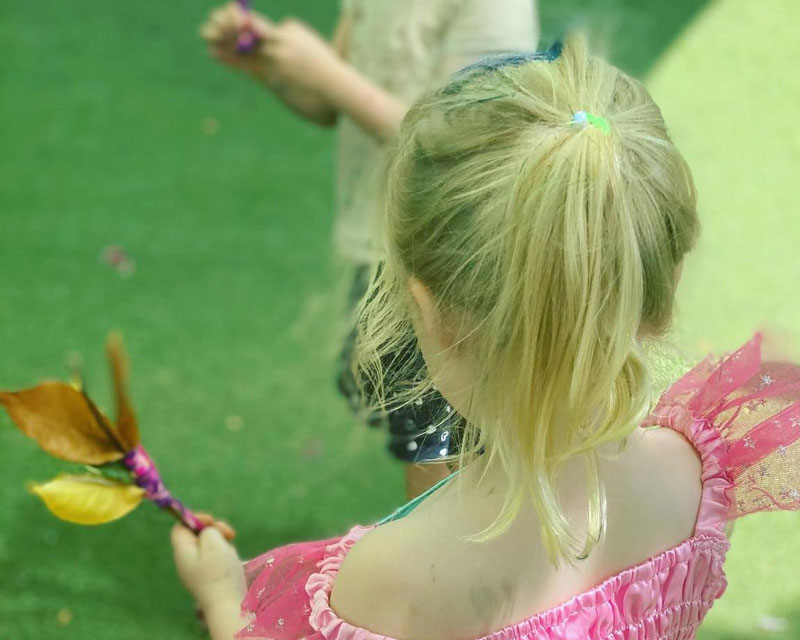
Encourage creative play with fewer toys
Too many toys can make children feel overwhelmed or bored. It can prevent children from using the full breadth of their imagination. With too many choices, children spend less time with each toy discovering its possibilities.
With more flashy gimmicks and novelty items filling up toy boxes, children become entertained rather than participants in play. They may quickly move on to the next piece and then the next, littering the floor with their discarded toys.
Decluttering the toy box is just the start to encouraging creative play. Choosing fewer, more thoughtful toys is the next. Inviting children to play with less manufactured products and more natural resources supports inquiry and imaginative play.
Natural resources include:
- Twigs
- Leaves
- Seeds
- Sand
- Feathers
- Leaves
- Flowers
- Shells
- Stones
Rather than playing with a plastic wand, perhaps they will build their own from a stick and other loose parts.
The different types of resources we give to children communicate messages and promote future behaviours. In addition, toys and other playtime resources can impact:
- The development of a child’s gross and fine motor skills.
- Their curiosity, promoting investigation and discovery.
- Their social skills, promoting sharing and creative group play.
Themed play stations invite children’s interest. Play stations put children’s toys and other resources on display. So they can see what’s available rather than digging through toy boxes and leaving what they don’t want on the floor.
Encourage your child to tidy up each play station when they’re ready to find something new. You can encourage cross-play by asking if there’s an item or two they’d like to take with them.
Often the simplest of things can create hours of fun and imaginative play. With fewer toys and more natural resources that spark inquiring minds, children’s creativity will bloom.
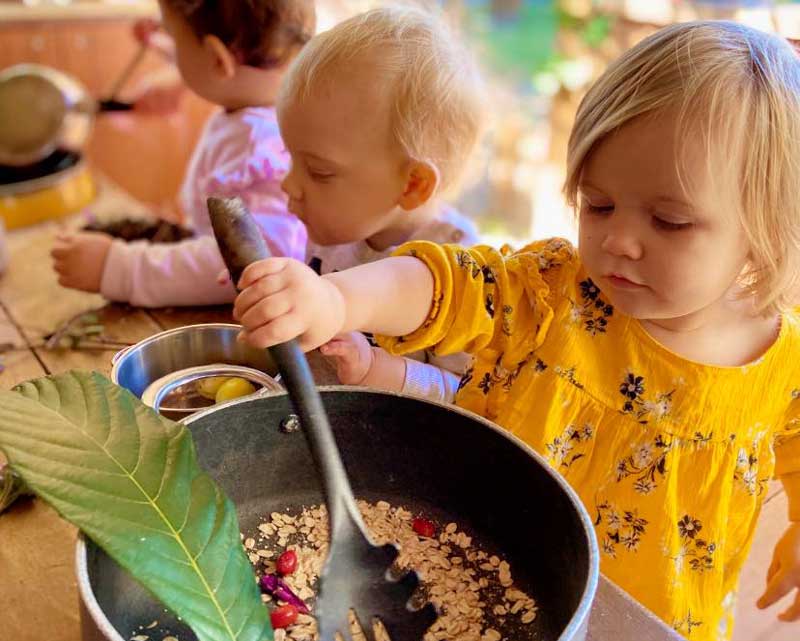
Inspire children’s creativity with Petit Early Learning Journey
At Petit ELJ, we believe fewer toys and more natural resources encourages children’s creativity. So we support natural things and repurposed items, such as cardboard boxes and kitchen items, like pots and pans.
Our Educators thoughtfully design our play spaces to provoke your child’s curiosity. Their invitations to play consider children’s interests and development.
If you’d like to learn more about how we encourage children’s creativity, contact your nearest Petit ELJ centre.
